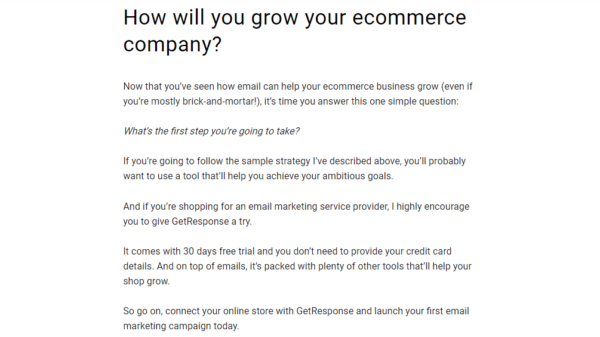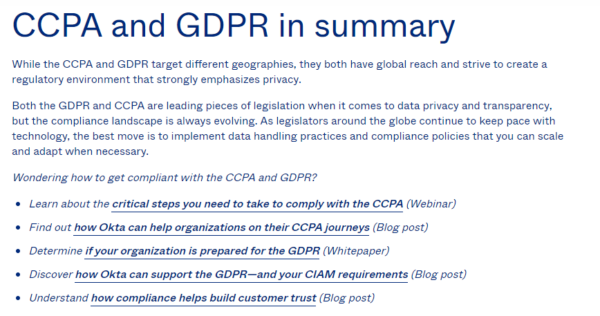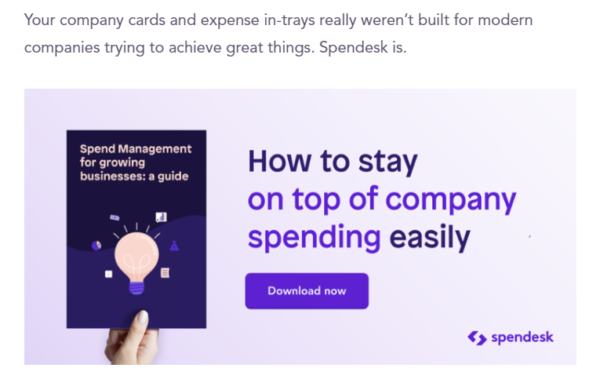 Introductions get a lot of attention. I’ve explored the topic of how to write them even though as a reader, I always skip them. I realize most people care about them, and a poor intro will lead them to leave the article.
Introductions get a lot of attention. I’ve explored the topic of how to write them even though as a reader, I always skip them. I realize most people care about them, and a poor intro will lead them to leave the article.
Now, I turn to conclusions, which don’t get the same attention but are critical. Your readers who arrive at them have cared enough about the topic to consume it all. Focus on the wrong aspects or omit them, and you risk people leaving your site forever.
People who read #blog articles to the end care about the topic. Give this primed audience an ending that works for them and your business, says @cotealexandra11 via @CMIContent. Click To TweetYour conclusion can take many formats. They can:
- Distill the post’s meaning
- Tell people what you expect them to take away from the post
- Engage your audience, getting them to comment, share, or answer a question
- Indicate what you want them to do next
Here are 15 options to create more effective conclusions.
1. Address multiple points
When writing conclusions, I tend to stick to the classic structure:
- Final words on the topic with one more keyword mention
- Call to action to a product or service
- Final question or food for thought that will motivate people to comment or share the post
Here’s an example of a multi-purpose conclusion for an article on email marketing from Get Response:

MailerLite adds visual elements to make the conclusion pop in its article about email branding:

In some cases, brands replace the “share this post” CTA with a small push to help people join in a conversation like Buffer did:

Buffer makes continuing the conversation easy by embedding a reply tweet at the end of the post for readers to use:

2. Prioritize one call to action
Envision your article’s conclusion as a landing page. Multiple CTAs will confuse readers. They could pick the low-priority CTA link instead of the one you really wanted to emphasize.
Roger Maftean’s post on CTAs will help you create ones that convert so you can pick the best single option CTA to use as the conclusion. In this example, Adobe makes it obvious what it wants readers to do:

3. Add a keyword
Ever had a keyword you really wanted to include in a post, but it didn’t fit? The article’s conclusion may be just the place. Use the keyword in the header and the body text. (You also can do this for a high-priority keyword you already used.)
Add a keyword or phrase to an article’s conclusion that couldn’t fit in the body of the text, says @cotealexandra11 via @CMIContent. Click To TweetIn this example, HelpCrunch uses the keyword phrase “customer success best practices” in the conclusion. How do we know that’s a target keyword? Its URL includes the phrase: (https://helpcrunch.com/blog/customer-success-best-practices).

TIP: For extra SEO points, highlight that sentence, use italics, or mention several keywords from the same sector in a bulleted list.
4. Make it a summary
Summarizing a post is a frequently used tactic. You want people to remember your main ideas and maybe even your brand name.
Summaries are a perfect addition to any educational or technical post like this one from Okta:

And Eventbrite uses the action takeaway summary in this conclusion:

5. Bring emotion
Offer an article conclusion fit for a human. Write for a person by tapping into relevant feelings and emotions.
In this example, Twilio uses a word like “woo” to create an energetic feeling they expect the reader to have after completing the article:

Bamboo HR concludes using a reassurance sentiment:

Or you can connect even more personally as Creatopy did:

You can make it even more personal by giving readers a direct way to connect with you as Ahrefs did in this piece:

6. Always use the same CTA
When all fails, create a gorgeous call to action and use it with every post to let readers know what you want them to do – no matter the content topic.
BambooHR asks readers to sign up for their newsletter:

freeCodeCamp invites readers to tweet the article. (Note: The CTA text doesn’t include article-specific information so it can be used with all articles.)

7. Sell subtly
If you haven’t managed to bring up your product or service in the body of an article, incorporate a subtle mention at the end.
In this example from Zendesk, it mentions, “If you’re ready to take the plunge, a CRM can ease the transition to remote work.” Zendesk, you may have guessed, is a CRM provider. (The link goes to an informational article, not a sell page.)

8. Promote obviously
Of course, you can always make your offer stand out with a huge CTA as Spendesk did in this conclusion:

9. Give away something
You can give readers something relevant to the article topic, a handout, template, video, or testimonial that will be helpful or motivate them.
Give away something in your #blog post’s conclusions that will be helpful or motivate readers, says @cotealexandra11 via @CMIContent. Click To TweetIn this example, readers can access a template relevant to the article’s topic after creating or logging into their Canva account:

10. Keep them reading
You already know the reader is interested in the topic if they get to the conclusion. You can use that to push them to other relevant content, keeping them on your website longer. Write a blog post ending while keeping in mind the possibility for people to stay on your website and read more on a subject.
In this article conclusion, Khalil Stemmler simply adds in a link to the next best read:

You also can do this visually under section headers like “What to read next” or “You might also like” at the bottom as Survey Monkey does here:

TIP: Be careful about automated recommendation feeds. It’s usually better to handpick the content, so it’s most relevant to the on-page article.
You don’t need to limit your keep-reading conclusions to text-based content. Redirect readers to a podcast episode or video as ProductPlan did in this example:
You don’t need to limit your keep-reading conclusions to text-based #content. Redirect readers to a podcast or video, says @cotealexandra11 via @CMIContent. #Blogging Click To Tweet
And here’s how RingCentral did it:

11. Adapt to the content type
Like with everything in the content world, there’s no one-size-fits-all. If you have different types of blog posts, you can make your conclusion consistent with each type.
For case studies, the most natural flow is to highlight how people could get in touch with you or find out more about your solution as Workday does in this example:

For a technical topic, you might conclude by pointing readers in a direction to see and learn more about the details as Algolia does here:

For research-based content, you can conclude with citing sources, explaining methodology, or recognizing contributors as Orbit Media does here:

12. Build a community
Create a sense of belonging by inviting people to join your community on social media or other channels like Slack, Circle, etc. Provide a sneak peek into what your community looks like and the perks of being there. Pinpoint past achievements and appeal to causes your audience care about.
Here’s how HelpScout did it:

13. Get people to think
The best conclusion is one people will remember long after. Asking your readers to reflect encourages them to keep thinking (and remembering your content) after reading.
Here’s a simple blog post ending from MailerLite that does this:

TIP: Prompting readers to think doesn’t always require a question. An impactful statement at the end can have the same effect.
Prompting readers to think doesn’t always require a question. An impactful statement at the end can have the same effect, says @cotealexandra11 via @CMIContent. #Blogging Click To Tweet14. Touch on ranking factors
Conclusions are yet one more way of playing a bit with Google’s ranking factors. Comments count as page content. Bring readers over to your comments section with sentences like “Ask a question and drop your best or brightest below.” Or “Let us know in the comments below.”
Backlinko’s Brian Dean places a separate conclusion box with all his articles. This is one of my favorites, which drew almost 400 comments:

Ask readers for input to expand your lists or research like Devaradise does here:

TIP: Prompt people to bookmark the article. Not only does it act as a signal to Google that the content is worth saving, but it also reminds readers to revisit the piece.
Prompt readers to bookmark the article to signal to @Google that the #content is worth saving, says @cotealexandra11 via @CMIContent. #SEO Click To Tweet15. End with an FAQ
Conclude with a section for frequently asked questions. This common practice lets you get in a couple of more keywords and answer everyone’s inquiries. Here’s how Shopify did it for T-shirt templates:

Buffer created an FAQ to address common product-related questions:

Final note on conclusions
And that’s it! The process of a blog post signoff is lengthier than one would expect. Yet, it’s really that very ending where you can say things you couldn’t in the body of the article.
The key is to customize them to fit both your purpose and the purpose of your readers. And your conclusion style doesn’t always have to be a big deal. Slack ends every article with its logo:

So, how are you going to change up your post conclusions?
Cover image by Joseph Kalinowski/Content Marketing Institute

